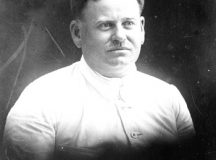Gershom Gorenberg, a historian and journalist, has spent years researching and writing this account of dramatic events in North Africa in the early stages of World War Two as German armies led by General Erwin Rommel seek to take Cairo and the Allies desperately try and thwart them. The book is a must for scholars, the text replete with many hundreds of annotated sources. For the ordinary reader it offers a thrilling spy story encompassing intelligence gleaned both from human sources and Sigint (signal intelligence) sources that played critical roles in determining the ultimate outcome of key battles for the future of the region. The style is captivating, engaging our intelligence and moving us emotionally. If you cannot fathom this or that intricate page – do not stop! Just carry on and you will be rewarded in full for your effort.
In the twentieth century, Cairo was the scene of many fateful events. In World War One it was the hunting ground of five intelligence efforts – British, French, Germans, Russians and Turks. Here was ‘Lawrence of Arabia’ and here also the Jewish ‘Nili Group’, who provided the British with the Humint that enabled General Allenby to free Jerusalem from Ottoman hands. Here too Winston Churchill chaired the ‘Cairo Conference’ where, as minister of the colonies, he put the final touches to the region’s future, including the implementation of the Balfour declaration. Cairo was once again an intelligence hotbed during World War Two, but as Gorenberg notes the role of Sigint was magnified, not least due to the major effort housed in Bletchley Park in England, where British minds were supplemented partially by United States personnel. Gorenberg covers this well, albeit in an abbreviated form, with most of the ‘golden nuggets’ relating to Bletchley Park still remaining under lock and key.
The battle in North Africa also has critical significance for the Jews of the Middle East, including in Mandatory Palestine. Gorenberg explains that had Rommel tasted victory in Cairo, a German SS unit charged with carrying out ‘executive measures’ would have been sent in the general’s wake to exterminate the 75,000 Jews of Egypt and subsequently the half million Jews in Palestine, the 25,000 Jews of Syria and Lebanon and, if Rommel realised his ‘oriental strategy’ of conquering the entire Middle East, the close to 100,000 Jews of Iraq.
The post-war success of the Egyptian officers
One of the many stories told by Gorenberg relates to a group of Egyptian officers who were preparing for Cairo to fall to Rommel, whose forces were close to overrunning Allied positions. One of them was a young signal officer, Anwar Al Sadat who was caught together with his diary that proved he had been sending messages to the Germans. Sadat was a member of a group of young officers who had teamed up to discuss the pros and cons of the two warring European powers. They determined that the Germans, then advancing successfully on Cairo, stood the best chance of success and would emerge as the ultimate winners. Simultaneously, British intelligence is consumed in an effort to discover the identity of a key source that was supplying the Germans with first class information. The search for this source as it unfolds is a key story in Gorenberg’s fascinating book. It comes as no surprise that the British Ambassador personally received a report on Sadat and wrote at the bottom ‘I hope that man will be shot … Please let me know what is done with him.’ (Typically, Gorenberg takes the trouble to give the source of this item – FO141/852 983/8/, 12 August 1942.) As we know, this wish did not come true; Sadat was not even court martialed but sent into detention until the end of the war. (Sadat, by the way, was not the ‘golden source’).
That same group of officers discussed in the book – led by Gamal Abd Al Nasser – ultimately seized power in post war Egypt. Nasser was was approached in Cairo by Miles Copeland, the CIA station chief in the Egyptian capital. Copeland had proved his professionalism when serving in Damascus from 1947 and actively participating in the military coup that brought General Husni Al Zaim to power in 1949. This was to be the first in a series of successful military coups in the Middle East. In Egypt Copeland pursued ongoing contact with Nasser and his group and advised them on matters concerning their own prospective take over. The detailed plans of the coup that brought down the monarchy in Egypt were carried out to the letter with Sadat the voice that announced the coup to Egyptians in a radio transmission in 1952. It was a great intelligence success and earned Copeland a room in Nasser’s headquarters after he took over full power. Less than two years later Egypt – supplied with the most modern military equipment – was firmly on its way to becoming a major player in the Soviet Union’s attempt to gain a foothold in the Middle East. By that time Washington had long replaced London as the principal antagonist of the Soviet Union in the Cold War. Copeland’s next assignment was centered on Iran where a popular revolution had brought Dr. Muhammad Mossadegh, to power. In 1953 Mossadegh nationalised the oil industry. The ruler, the Shah, fled the country, and was persuaded to return only after a massive effort including the distribution of large sums of money to individuals crowding the capital. This was a CIA operation, implemented in the field – the crowded streets of Tehran. The denouement came about a quarter of a century later with the overthrow of royal regime and the ascendance of the Khomeini revolutionary movement.
Sadat has been regarded in Israel as a dull figure lacking any qualities of leadership, yet Gorenberg’s book places him in an entirely different category at the very outset of his military career. He cites Sadat’s biographer:
The rumor was that Egypt would be given to Italy, Anwar Al-Sadat would recall. He got together with his friends among the junior officers and came up with a plan: they would send someone to the German side of the lines and offer to recruit an entire army to fight on the axis side. They would provide aerial photos of British positions in return for full independence. Sadat’s memories often glorified his actions. In this case though, the plan was real – and shows that it was only at this moment that the officers fully realised that an Axis victory might mean trading British domination for Italian or German rule.
Backing the winner
At every stage of his career, Sadat attached prime importance to identifying ‘the winner’ with no other motives, moral or otherwise, playing any role. I personally encountered the idea of ‘backing the winner’ while serving in Washington D.C. in 1973 as Mossad station chief. On the fourth day of the Yom Kippur war, I was summoned to a meeting with Tom Karamessines, the CIA deputy director. By that time, Israel had suffered grievous losses in a war launched by Sadat. Egyptian forces had crossed the Suez Canal and destroyed a string of military positions allowing them to push forward and Syrian forces had overtaken much of the Golan Heights and inflicted major casualties to both armour and intelligence installations. Suddenly Israel considered itself to be fighting for its very existence and survival. After some very brief words, Tom asked me to forward a request to my superiors back home to immediately supply an updated situation report of the country’s capabilities. Israel had begun sending early messages containing requests for urgent replacements of shot down aircraft and disabled tanks. I had never been the channel for such a request and asked why I had been chosen to pass the message and why it had been made. The answer was brief and terse ‘we need to know in precise detail what is Israel now’. [i.e after 1967 Israel had the image of a regional power but now there are reports the country is collapsing.] When I asked why, Karamessines replied, ‘Because the United States must back the winner’.
As mentioned, the quandary of who would emerge victorious was the key question for Sadat during the years covered by Gorenberg’s book. But the Yom Kippur War decades later actually ended with two victors, not one. Egypt and Syria won the first week and destroyed a third of Israel’s armour and Airforce; Israel won the third week and crossed the Suez Canal and once again found Damascus in the range of its artillery. To this day Egypt celebrates ‘army day’ – the ‘victory’ in 1973 – in Cairo with a military march. Having suffered more than two thousand dead and over ten thousand wounded, Israel does not ‘celebrate’ its own victory, instead marking the anniversary of the signing of its first peace treaty with its Arab and Muslim adversaries. That was achieved once Sadat realised his best bet would be a peace treaty in which both sides emerged as winners. But before getting to the White House ceremony marking the final treaty under the auspices of American President Carter on the White House lawn in 1979, six years of negotiations between Israel and Egypt had to take place.
A few days after a tenuous ceasefire between Israel and Egypt came into force in October 1973 and with the ‘Egyptian Third Army’ still surrounded by Israeli troops on the east bank of the Suez Canal, Prime Minister Golda Meir met President Nixon and his secretary of state Dr. Henry Kissinger in Washington. Time was running short, and so was water for the Egyptian troops in the field. In addition to his discussions with Meir and Sadat, Kissinger was also in ongoing dialogue with Leonid Brezhnev, the leader of the Soviet Union. He spent several days in Moscow talking with the Soviets as threats of a world war were in the wind.
In one of the longest ever talks between Meir and Kissinger, the latter said ‘diplomatically you have not won the war, but you have won it tactically.’ Golda replied that ‘diplomatically we will never win’ and he responded ‘Exactly, that is the tragedy.’
The following day I met the Prime Minister one on one (as I did on all her numerous visits to D.C.). Following the meeting I sent a hand-written personal letter to General Zamir, the Mossad Director which I now quote: ‘I sat with her [Meir] over a light lunch. She said in Yiddish “when your blood is sucked up and your neshamah [soul] is taken out you have no option but to walk around happily. I had tears in my eyes, but I did not want to give him [Kissinger] this satisfaction”. ‘I will not recount to you the events of these awful days in which our friends tried to sway us from those achievements that we gained by sacrificing an indescribable price in the form of the blood of the very best heroes of the Jewish people. I can only say this – that the Prime Minister fought like a Lioness and did not move one inch.’
As one reads Gorenberg’s magnum opus focusing on the war in North Africa and the intelligence battles 1939-42 one cannot avoid thinking about those many times throughout history when leaders and enemies – such as Sadat – have been misjudged. Those who read this book may not only gather food for thought but also indications as to what to look for at the supreme political level and how to remain the eternal ‘winner’. When Sadat flew to Israel and surprised the entire world he acknowledged a winner and settled for a jointly owned crown that he had originally contemplated sharing with Hitler in Berlin. His assassins felled him, but his ultimate achievement lives on to this day.




































